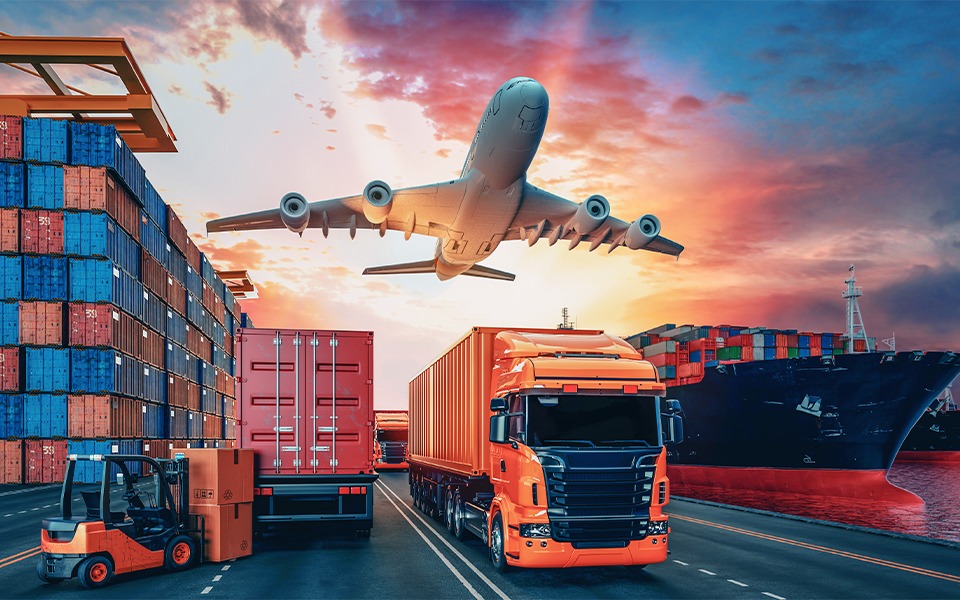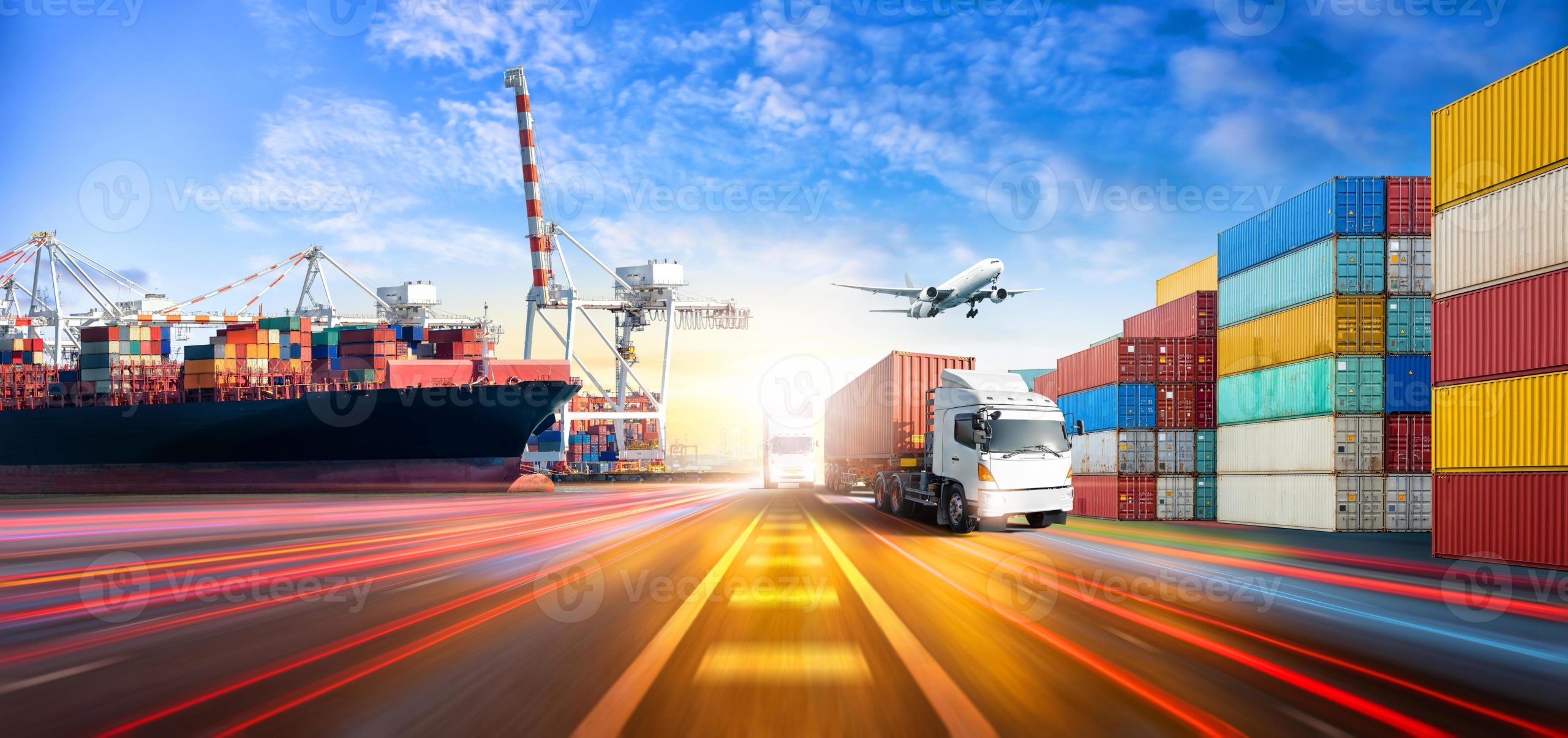The freight forwarding industry, a linchpin of global trade, is perpetually in motion, mirroring the complexities and volatilities of the world economy. In recent years, it has been a crucible of unprecedented challenges and transformative innovations. From geopolitical tremors to technological revolutions and the relentless push for sustainability, freight forwarders are not merely moving goods; they are navigating a dynamic ecosystem defined by constant flux. This article delves into the critical news and trends shaping the industry, offering a comprehensive look at the forces at play and the strategies forwarders are employing to thrive.
I. Geopolitical & Macroeconomic Headwinds: The Unpredictable Variables
One of the most defining characteristics of the current freight forwarding landscape is the pervasive influence of geopolitical events and macroeconomic shifts. These external forces often dictate routes, costs, lead times, and overall supply chain stability.
The Red Sea Crisis and Its Ripple Effects:
The ongoing attacks by Houthi rebels in the Red Sea, particularly targeting commercial vessels transiting the Bab al-Mandab Strait and the Suez Canal, have emerged as the most significant disruption since the COVID-19 pandemic. Major shipping lines have rerouted vessels around the Cape of Good Hope, adding thousands of nautical miles and weeks to transit times between Asia and Europe.
- Increased Costs: Longer voyages necessitate more fuel, higher operating expenses, and significantly inflated insurance premiums. These costs are inevitably passed on to shippers and, ultimately, consumers.
- Capacity Crunch & Rate Volatility: While the global fleet saw an influx of new vessels in 2023, the rerouting effectively absorbs significant capacity. This has led to a tightening of available space on key trade lanes, pushing ocean freight rates upwards, particularly for container shipping. Freight forwarders are grappling with volatile spot rates and struggling to secure reliable space for their clients.
- Schedule Reliability: Vessel delays are rampant, impacting inventory management, production schedules, and overall supply chain predictability. Forwarders are forced to constantly update ETAs and explore alternative, albeit often more expensive, multimodal solutions.
Lingering Impact of the Ukraine War:
While not as immediately disruptive to global shipping lanes as the Red Sea crisis, the war in Ukraine continues to exert pressure on commodity prices, particularly energy and agricultural products. It has also altered overland routes for Eurasian trade, increased geopolitical risk assessments, and fueled broader economic uncertainties.
Global Economic Slowdown and Inflation:
High interest rates, persistent inflation in many major economies, and a general slowdown in global demand have tempered what was once a red-hot market post-pandemic. While consumer spending remains relatively robust in some regions, overall manufacturing output and trade volumes have shown signs of contraction. This translates to lower demand for freight services on certain lanes, creating a complex environment where some sectors experience a downturn while others face disruption-induced rate spikes. Freight forwarders must navigate these uneven demand patterns and manage client expectations regarding costs and service levels.
II. The Digital Transformation Imperative: Efficiency Through Innovation
In an era defined by uncertainty, technology offers a powerful antidote, enabling greater visibility, efficiency, and resilience. Digitalization is no longer a luxury but a core strategic imperative for freight forwarders.
Artificial Intelligence (AI) and Machine Learning (ML):
AI and ML are rapidly transforming operational efficiencies.
- Predictive Analytics: AI algorithms analyze vast datasets to forecast demand, predict potential disruptions (weather, port congestion), and optimize routing. This allows forwarders to proactively adjust plans, minimize delays, and offer more accurate ETAs.
- Pricing and Quoting: AI-powered tools can instantly generate competitive quotes by analyzing real-time market rates, available capacity, and historical data, significantly speeding up the sales process.
- Automation: AI streamlines repetitive tasks such as documentation processing, customs declarations, and customer service inquiries, freeing up human resources for more complex problem-solving.
Blockchain for Transparency and Security:
Blockchain technology holds immense promise for enhancing transparency and security across the supply chain.
- Immutable Records: It creates an unalterable, distributed ledger of transactions, ensuring the authenticity and integrity of shipping documents, contracts, and customs data.
- Streamlined Documentation: Reduces paperwork and manual processes, accelerating customs clearance and reducing the risk of fraud.
- Enhanced Traceability: Provides end-to-end visibility of goods, from origin to destination, improving accountability and facilitating faster issue resolution.
Internet of Things (IoT) and Real-time Visibility:
IoT devices, such as smart sensors and GPS trackers, provide real-time data on cargo location, temperature, humidity, and shock.
- Proactive Monitoring: Allows forwarders and shippers to monitor critical shipments continuously, identify deviations from planned routes or conditions, and intervene before issues escalate.
- Improved Security: Alerts for unauthorized access or tampering enhance cargo security.
E-commerce Integration and Platformization:
The explosive growth of e-commerce continues to drive demand for sophisticated logistics solutions. Freight forwarders are investing in platforms that seamlessly integrate with e-commerce marketplaces, enabling automated booking, tracking, and last-mile delivery management. The rise of digital freight marketplaces is also empowering shippers with more options and greater transparency.
III. The Green Logistics Revolution: Sustainability at the Forefront
Sustainability is no longer a niche concern but a core strategic pillar for the freight forwarding industry. Regulatory pressure, investor demands, and growing consumer and shipper awareness are driving a profound shift towards greener logistics.
Decarbonization Goals and Regulations:
- IMO 2023 Strategy: The International Maritime Organization (IMO) has set ambitious targets to reduce greenhouse gas (GHG) emissions from shipping, aiming for net-zero by or around 2050. This drives investment in alternative fuels and energy-efficient vessel designs.
- EU Emissions Trading System (ETS): The inclusion of shipping in the EU ETS means vessels calling at European ports will be subject to carbon pricing, adding a direct cost to emissions. Forwarders must factor this into their pricing and advise clients on emission-reduction strategies.
- Sustainable Aviation Fuels (SAF): The air cargo sector is increasingly investing in SAF, though availability and cost remain significant hurdles. Forwarders are offering "green lanes" or carbon offsetting programs to help clients reduce their airfreight footprint.
Alternative Fuels and Technologies:
The industry is actively exploring and investing in alternative fuels such as methanol, ammonia, hydrogen, and biofuels for ocean shipping. Electric and hydrogen-powered trucks are also gaining traction in road freight. Forwarders play a crucial role in advising clients on these evolving options and integrating them into multimodal solutions.
Circular Economy Principles:
Beyond emissions, forwarders are increasingly involved in promoting circular economy principles, including reverse logistics for returns, repair, and recycling, minimizing waste, and optimizing packaging.
ESG Reporting and Compliance:
Environmental, Social, and Governance (ESG) reporting is becoming standard, with companies expected to disclose their sustainability performance. Freight forwarders are instrumental in providing shippers with the data and transparency needed to meet their own ESG targets. This includes calculating scope 3 emissions (emissions from a company’s value chain, including transportation).
IV. Capacity, Rates, and Market Dynamics: A Volatile Balance
The interplay of new vessel deliveries, demand fluctuations, and geopolitical events has created an exceptionally volatile market for freight capacity and rates.
Ocean Freight: Overcapacity Meets Disruption:
2023 saw a record number of new container ship deliveries, leading to concerns about overcapacity and downward pressure on rates. However, the Red Sea crisis has temporarily absorbed much of this excess capacity, causing rates on affected lanes to spike. Forwarders must navigate this paradox, managing long-term contracts against volatile spot market conditions.
Air Cargo: A Return to Normality, Then Some:
The return of passenger air travel has brought back significant belly capacity, easing the tight market conditions seen during the pandemic. However, the Red Sea crisis has led some shippers to pivot to air freight for urgent cargo, creating localized demand spikes and putting renewed pressure on air cargo rates and capacity for certain routes.
Road Freight: Persistent Challenges:
The road freight sector continues to grapple with driver shortages, rising fuel costs, and regulatory changes (e.g., stricter emissions standards). These factors contribute to higher operational costs and can impact service reliability, especially for last-mile delivery.
V. E-commerce and Last-Mile Evolution: Speed, Scale, and Complexity
The relentless growth of e-commerce, particularly cross-border and direct-to-consumer (D2C) models, continues to reshape the freight forwarding industry.
Cross-Border Complexity:
Managing customs, duties, and varied regulatory requirements for international e-commerce shipments is a core challenge. Forwarders are investing in technology and expertise to streamline these processes.
Returns Logistics (Reverse Logistics):
The high volume of e-commerce returns creates a complex reverse logistics challenge. Forwarders are developing efficient systems for processing, inspecting, and re-stocking or disposing of returned goods.
Speed and Convenience Demands:
Consumers expect ever-faster delivery. This pushes forwarders to optimize transit times, explore expedited shipping options, and leverage micro-fulfillment centers closer to urban areas.
VI. Workforce Challenges & Talent Development: Bridging the Skill Gap
The freight forwarding industry faces a looming talent crisis. An aging workforce, coupled with a lack of new entrants and a rapidly evolving technological landscape, creates significant challenges.
Aging Workforce and Labor Shortages:
Many experienced professionals are nearing retirement, and attracting younger talent to a traditionally less glamorous industry is difficult. Driver shortages in road freight remain a persistent issue globally.
The Need for Digital Skills:
As technology permeates every aspect of the industry, there’s a growing demand for professionals with digital literacy, data analytics skills, and expertise in AI, IoT, and other emerging technologies.
Attracting and Retaining Talent:
Forwarders are investing in training programs, fostering inclusive work environments, and highlighting career growth opportunities to attract and retain skilled professionals. The emphasis is shifting from manual tasks to strategic thinking, problem-solving, and technology management.
VII. Resilience and Risk Management: The New Normal
The frequency and intensity of global disruptions have elevated supply chain resilience to a top priority for shippers and, by extension, freight forwarders.
Lessons Learned from COVID-19:
The pandemic highlighted vulnerabilities in lean, just-in-time supply chains. Companies are now focusing on diversification of suppliers and routes, holding strategic inventory buffers, and improving visibility.
Proactive Risk Assessment:
Forwarders are using advanced analytics to identify potential risks (geopolitical, weather, port congestion, cybersecurity threats) and develop contingency plans before they materialize.
Diversification and Redundancy:
Building redundancy into supply chains – having alternative suppliers, carriers, and routes – is crucial. Freight forwarders are advising clients on multi-modal options and different geographic sourcing strategies.
Cybersecurity:
As operations become more digitized, the risk of cyberattacks increases. Protecting sensitive data and ensuring the integrity of digital systems is paramount.
Conclusion: Adapting to the Age of Constant Change
The freight forwarding industry stands at a critical juncture. It is an industry under immense pressure from external forces, yet simultaneously brimming with opportunities for innovation and growth. The news of today reflects a dynamic environment where geopolitical tensions can reroute global trade in an instant, technology offers unprecedented solutions, and the imperative for sustainability drives fundamental change.
Forwarders who will thrive in this new era are those that embrace adaptability, invest strategically in technology and talent, prioritize sustainability, and build robust, resilient supply chains for their clients. The future of global trade hinges on their ability to navigate these complex tides, transforming challenges into pathways for a more efficient, transparent, and sustainable logistics ecosystem. The journey ahead is undoubtedly complex, but for those willing to innovate and evolve, the opportunities are boundless.

